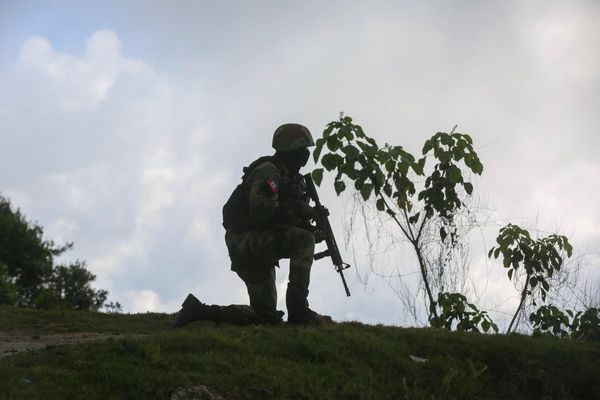For the last few years, the situation on the Line of Actual Control (LAC) has continued to remain extremely tense; it has just stopped short of a war, with the Doklam and Galwan crises. Every now and then, the media reports incidents of transgressions and stand-offs between Indian and Chinese troops at the LAC even as both countries incur a huge expenditure in ensuring defensive preparedness as well as better military infrastructure as they induct men, material and equipment close to the LAC.
Editorial | Focus on the borders: On the stalemate in India-China relations
Need for stability
After Galwan, we have seen one of the biggest mobilisations of Chinese forces into Tibet. There has also been an increase in rhetoric and jingoism in both countries, calling for more aggression. The seriousness of the matter can be gauged from the statement made recently by India’s External Affairs Minister S. Jaishankar at a media group’s meet — that “the situation along the LAC in Eastern Ladakh remains very fragile and quite dangerous in terms of military assessment”. This state of affairs is not sustainable and can trigger a major conflict, thereby destabilising the entire region and adversely impacting the world, politically and economically. Therefore, it is in everyone’s interest that the LAC is made stable and the two giant neighbours see a benign rise.
The complexity of the India-China border problem precludes a permanent solution on an immediate basis. Chinese territorial claims include the entire Arunachal Pradesh and the occupied Aksai Chin. No Chinese government, more so the present one under Xi Jinping, is likely to tone down the narrative that has been built over a long time, which claims Ladakh and Arunachal Pradesh as two of the five fingers that are attached to the Tibetan Palm.
Similarly, the Indian political establishment is not in a position to make any concessions to facilitate a mutually acceptable border settlement. Thus, it is better that both sides consider taking short-term but effective and pragmatic steps to stabilise the LAC, reducing the possibilities of a conflict. For India, it is all the more important that LAC disputes do not escalate into full-fledged conflicts because despite the assurances made by the government, there is no surety that the results of war will be favourable to us.
Agreements and inadequacies
The India-China engagement got an impetus after the visit by then Indian Prime Minister to China in December 1988. Since then, four agreements have been signed between the two countries (in 1993, 1996, 2005 and 2013) to maintain peace along the LAC, laying the framework for dealing with the border issue and covering the spectrum of engagement from the highest levels of government to border personnel meetings in the field. For more than two decades, these arrangements have served their purpose well. However, the heightened tension on the LAC suggests that there are inadequacies in the agreements.
The agreements are based on the premise that the LAC is mostly defined and understood by both parties. However, this is not the case and there are large segments which lack clarity.
Article I of the 1993 Agreement stipulates the creation of joint mechanisms to verify and settle LAC-related disputes. After 19 years, the Working Mechanism for Consultation and Coordination on India-China Border Affairs (WMCC) was created in 2012. It meets twice in a year but has little to show in terms of results on the ground.
The 3,488 kilometre-long LAC has only four Border Personnel Meeting (BPM) points; the Lipulekh BPM Point which was proposed in the Article V of the 2005 Protocol has not been established till now. The paucity of BPM points precludes constructive engagement between the troops on the ground resulting in the escalation of disputes.
A mutually agreed reduction and redeployment of forces along the LAC, as in Article II of the 1993 Agreement and Articles II and III of the 1996 Agreement, has not seen any progress.
The current mindset among the Indian security establishment is to be “unyielding” with China as it is felt that the “salami slicing tactics ” of the Chinese must be halted. While firmness is essential, there is also a need to identify the reasons for rising clashes on the LAC and working on solutions. The opinion is that aggression is not the only reason for the rise in LAC incidents; the quantum jump in surveillance technology provides visibility of movement of opposing forces in areas that were blind spots earlier. This coupled with increased troop density, better roads, improved logistics and availability of aviation assets enhance the reaction capability, thereby increasing the face-offs and clashes.
Consider these steps
Whatever be the reasons, the situation needs to be brought under control and chances of a full-fledged conflict minimised. These steps are recommended to usher peace and stability on the LAC.
Convert the LAC into a Line of Control (LC) by delineating it on the map and on the ground without prejudice to border claims. This will reduce the urge among the forward troops to inch forward. This may seem difficult but can be implemented with a display of maturity by both sides and with the use of technology.
The disputed areas on the LAC can be treated as no entry zones; alternatively, both sides should be allowed to patrol these areas as per a mutually agreed frequency.
Joint patrolling of the disputed areas must also be explored as this can result in the maintenance of status quo and an increase in confidence.
Existing Confidence Building Measures and engagement mechanisms need to be strengthened by providing more teeth to the WMCC and establishing more BPM points so that local issues can be resolved quickly.
Gajinder Singh is an Infantry General with vast experience on the Line of Actual Control and the Northeast







